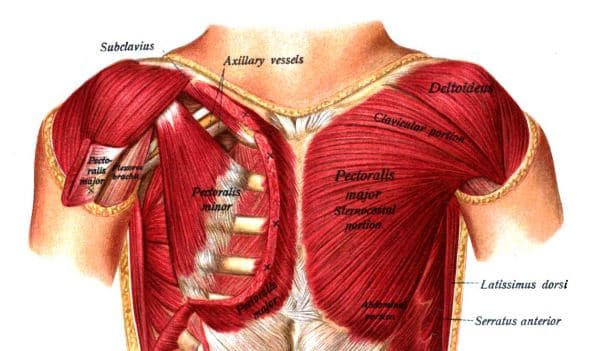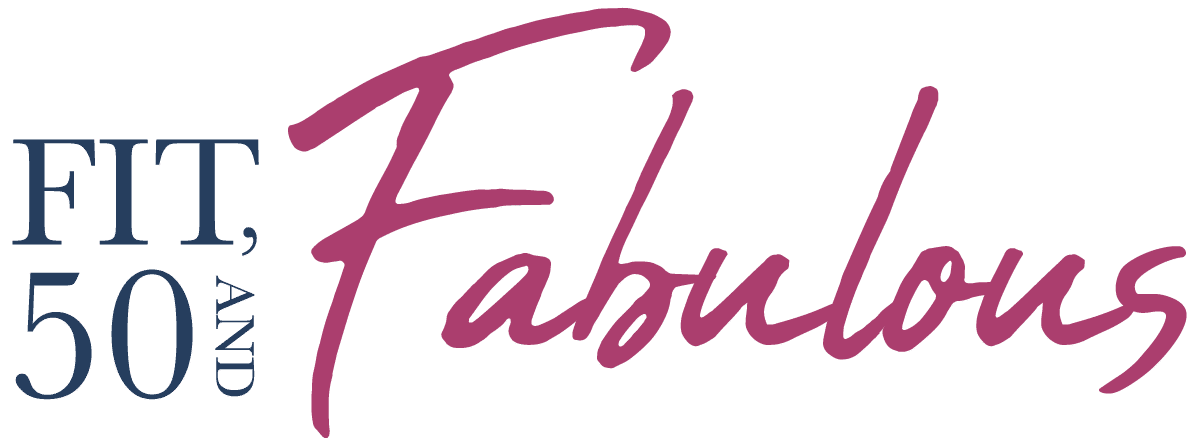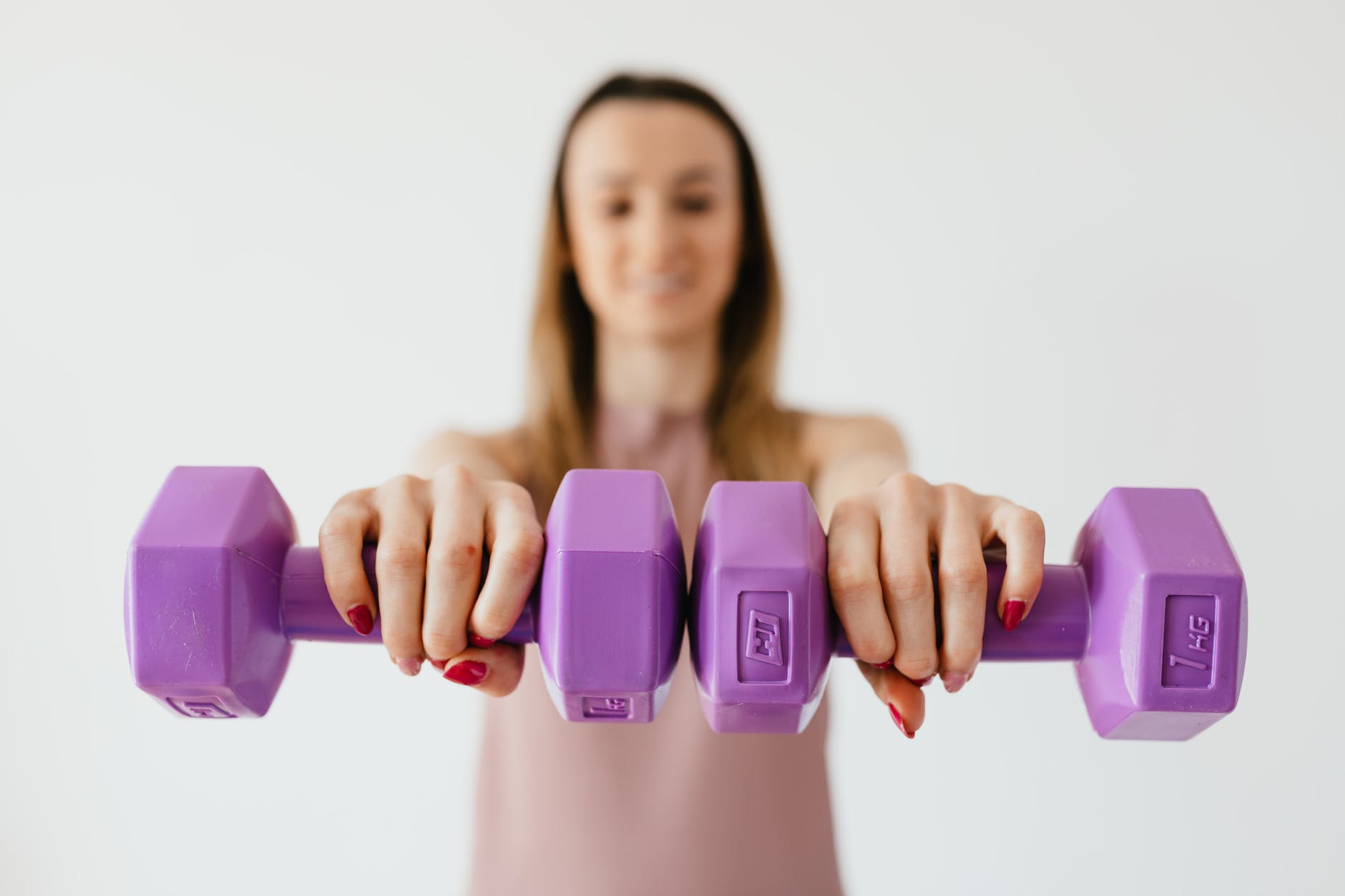Are you ready? Let’s turn up the heat!
Want a firmer-looking chest? I sense head nodding a maybe a “Hell yeah! or two.
If you are willing to work for it, then I will show you exactly how to do it, but it does involve some hard work and a pair of dumbbells.
Trust me; I feel your pain. If you’re wadding into your 50s like I am, your chest (okay – your boobs) aren’t what they used to be. Gravity takes over, and your chest doesn’t have that same youthful look anymore. Frustrating or what??
This post will give you a few tips, tricks, and several exercises to naturally lift your chest area. Of course, there’s no magic fix, but there are things you can do to make a difference, and these things involve you slinging some weights or grabbing some resistance bands. Either can be done in a gym or at home.
Before we get started, let’s look at what muscles make up the chest area and why building your chest muscles is a good idea. Before you even think it, let’s abolish the myth that working your chest muscles is only for men. In fact, I’d argue there are better reasons for women to build chest muscles than men!
What Muscles Make Up My Chest?

This might be something you’ve never looked at before, but knowledge is power! Understanding the muscles that make up your chest will ensure you know what areas are working and why they need to be worked.
Here’s another reason why knowing your chest anatomy is important, and it’s something I’ve learned through years of weight training. When you know what muscle you’re working, you can better focus on it feels and works through the exercise. When you are focused on the contraction through the whole range of motion, you’re getting better results in the long run.
Pectoralis major
A thick, fan-shaped muscle, which makes up the bulk of the chest muscle. It lies under the breast. It serves to flex, extend, and rotate the humerus, the long bone of the upper arm.
Pectoralis minor
A thin, triangular muscle located beneath the pectoralis major. It attaches to the ribs and serves to stabilize the scapula, the large bone of the shoulder.
Pectoral fascia
This is a thin layer of tissue over the pectoralis major, extending toward the latissimus dorsi muscle on the back.
Subclavius muscle
The subclavius muscle, along with the pectoralis major and pectoralis minor, forms the axilla or armpit. The subclavius moves the shoulder downward and forward.
Serratus anterior
This is another muscle on the front of the chest. It moves the scapula forward around the torso, as when throwing a punch.
Why Should I Build My Chest Muscles?
For many women, building our chest muscles isn’t the first thing that comes to mind. We’re more likely to focus on abs, arms, shoulder, or booty for aesthetic purposes. However, as we age, building strength in our chest has huge overall benefits that shouldn’t be overlooked.
Improve Your Posture
Our shoulders and back muscles receive a lot of attention when it comes to improving your posture. But your chest muscles are a significant factor too. If you’ve sat at a desk job for years, you may have ended up with a rounded back and shoulders. This can result in a chest that appears sunk in and even droopy. Working your chest muscles open up this area and help to combat a rounded back and shoulders.
Perky Breasts!
Yep – I buried the lead here. Surely for many of us, this reason should have had top billing! Building your two main chest muscles can lift the breast to make them appear perkier. Many women I’ve talked to think that exercising the chest area will make the breasts appear smaller. This isn’t true. Imagine if it was and you could selectively lose fat loss! Just because you are adding muscle below the breast tissue does not mean your breast size will change. Your chest will only look better, not bigger.
Improved Breathing
Not only does building your chest muscles help with posture, but it can also help you breathe easier. When you have good posture, this opens up your chest, expanding your lung capacity for you to take deeper breaths. Each time you breathe in, the pec minor stretches, and it allows your rib cage to expand and allow airflow in. If you are hunched over with a bad posture, this whole process won’t be as efficient.
What Chest Exercises Should I Do?
Below you will find the exercise you need to build your chest muscles explained. At the bottom, you will find your workout card showing your chest exercise regimen.
Incline Dumbbell Bench Press
Set up a weight bench at an incline of 30-45°. Sit with your feet flat on the floor and your back on the bench. Lift the dumbbells to chest height with your palms facing forwards. Breathe out and push the dumbbells up until your arms are fully extended, using your pecs to power the movement. Don’t let the dumbbells touch.
No weight bench? No problem! Switch this up to a flat dumbbell bench press by lying on the floor.
Dumbbell Chest Fly
Hold a dumbbell in each hand. Start with your arms at chest level at your sides, elbows bent and pointing out. Slowly exhale and lift your arms above your chest. Inhale and slowly lower your arms to your sides to the starting position. Continue to press up.
Push-Ups
Push-ups are an excellent chest building exercise you can do anywhere. They work not only your chest muscles, but your shoulders and triceps as well. If you’re a beginner, I suggest doing a modified version on your knees.
- Tighten your abdominals, keep your back flat, your neck in alignment with your spine, and keep your elbows close to your sides.
- With your hands directly under your shoulders, lower yourself slowly and with control.
- Lastly, push up!
Narrow Chest Press
To perform the narrow chest press with dumbbells safely, lying flat on your back on a bench or the floor, keeping your elbows tucked in by your side, and your dumbbells touching on your chest. Slowly raise the dumbbells above your head until your arms are almost straight but avoid locking your elbows. Now slowly lower the dumbbells until they are in line with your chest again.
Dumbbell Pullover (advanced move)
Grasp a dumbbell with both hands and position yourself on a flat bench with your shoulder blades resting on the bench. You should be at a 90-degree angle to the bench. Your back should be straight, knees bent at 90 degrees, and feet firmly planted on the floor. Holding the dumbbell in both hands, straighten your arms so that the dumbbell is directly overhead. This is the starting position. Bending at the shoulders only and keeping your arms straight, slowly lower the weight down behind your head until the dumbbell reaches the height of the bench. Slowly raise the dumbbell back to the starting position.
Plank Reach Through (advanced move)
Get in a high plank position. A high plank position is the start of a push-up. With your arms bent and your shoulders directly over your elbows. Lift one arm and reach through underneath your body as far as you can while still keeping everything tight. Return to the starting position, then repeat on the opposite side.
What Is a Good Chest Workout?
Rest for 30-60 seconds after performing each set. Choose a weight that is manageable and not so heavy that you can’t move it.
- Dumbbell Chest Press: 3 sets of 12 reps
- Chest Fly: 3 sets of 12 reps
- Push-ups: 3 sets of 10 reps
- Narrow Chest Press: 3 sets of 10 reps
- Dumbbell Pullover: 3 sets of 10 reps
- Plank Reach Through: 10 reps on each side
Final Words
Building your chest muscles has many benefits. Not only can it help give you the appearance of a firmer, perkier chest, but it can also help open up your chest, improve your posture, and help you breathe better. A better posture makes your entire shape look more agile and certainly more youthful.
Don’t be scared of chest training my friends! Be brave, and grab that pair of dumbbells!

